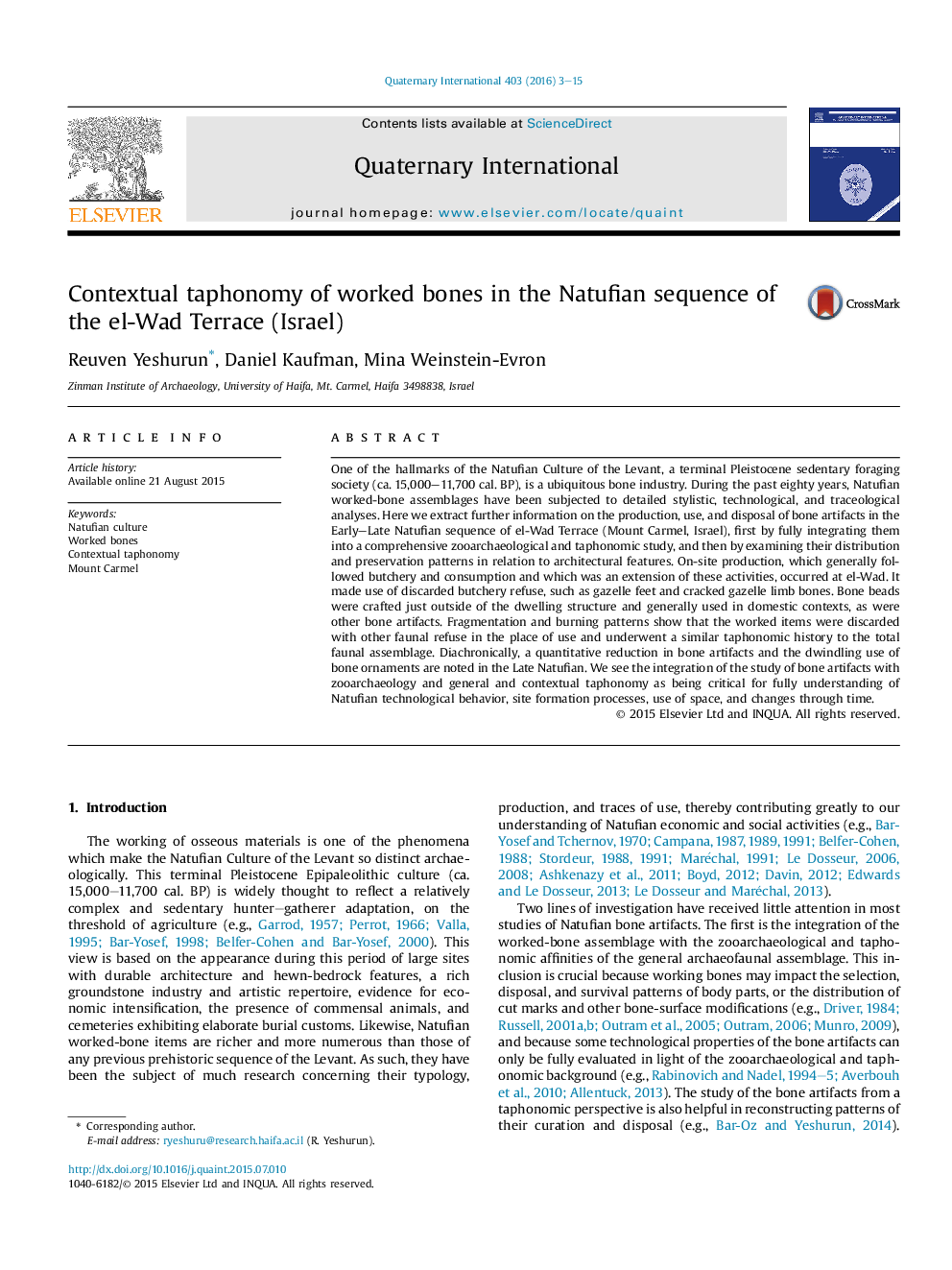| Article ID | Journal | Published Year | Pages | File Type |
|---|---|---|---|---|
| 1040014 | Quaternary International | 2016 | 13 Pages |
One of the hallmarks of the Natufian Culture of the Levant, a terminal Pleistocene sedentary foraging society (ca. 15,000–11,700 cal. BP), is a ubiquitous bone industry. During the past eighty years, Natufian worked-bone assemblages have been subjected to detailed stylistic, technological, and traceological analyses. Here we extract further information on the production, use, and disposal of bone artifacts in the Early–Late Natufian sequence of el-Wad Terrace (Mount Carmel, Israel), first by fully integrating them into a comprehensive zooarchaeological and taphonomic study, and then by examining their distribution and preservation patterns in relation to architectural features. On-site production, which generally followed butchery and consumption and which was an extension of these activities, occurred at el-Wad. It made use of discarded butchery refuse, such as gazelle feet and cracked gazelle limb bones. Bone beads were crafted just outside of the dwelling structure and generally used in domestic contexts, as were other bone artifacts. Fragmentation and burning patterns show that the worked items were discarded with other faunal refuse in the place of use and underwent a similar taphonomic history to the total faunal assemblage. Diachronically, a quantitative reduction in bone artifacts and the dwindling use of bone ornaments are noted in the Late Natufian. We see the integration of the study of bone artifacts with zooarchaeology and general and contextual taphonomy as being critical for fully understanding of Natufian technological behavior, site formation processes, use of space, and changes through time.
